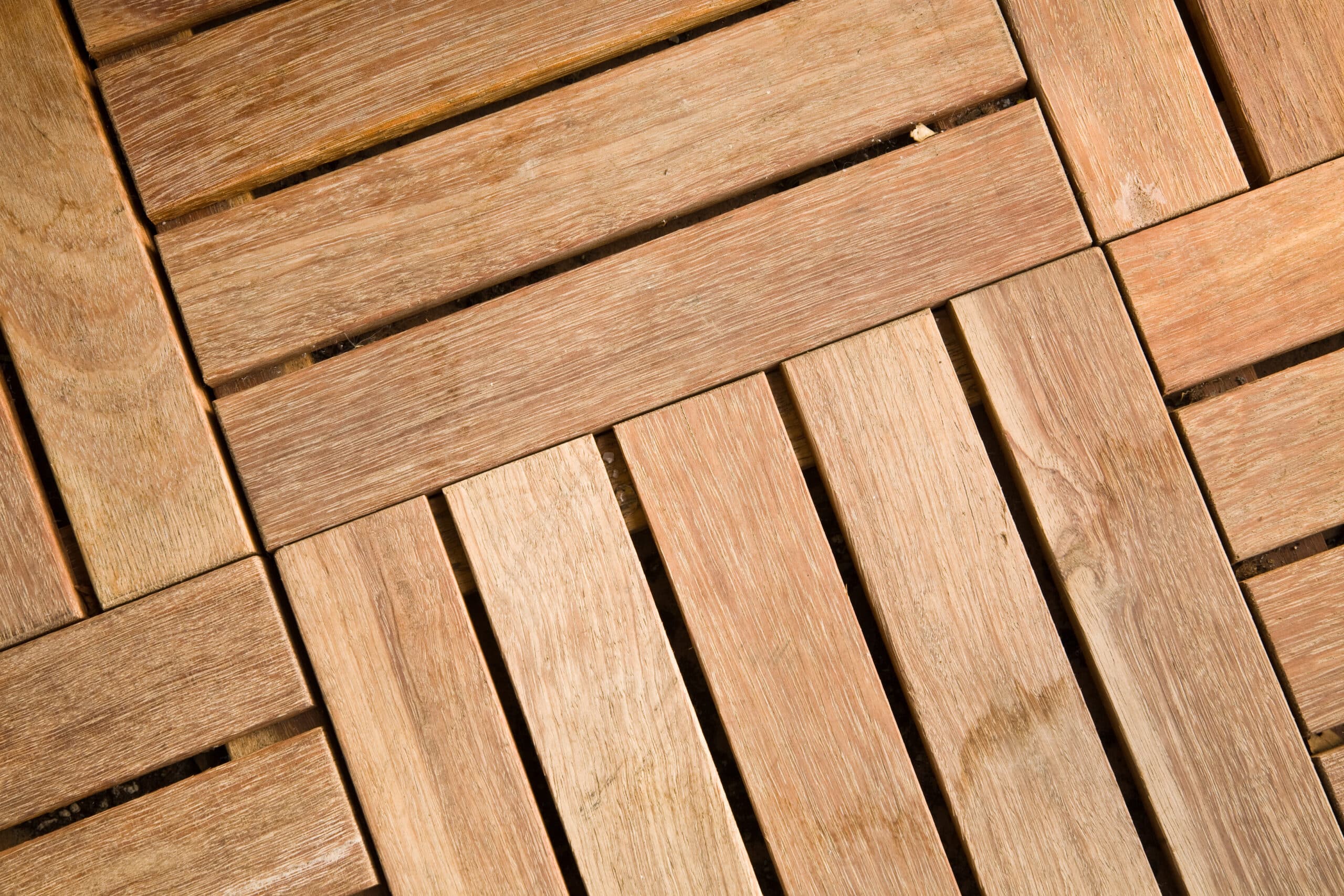18 Dog Fence Ideas: Styles & Solutions for Every Yard & Every Dog
If you own a dog, a fenced-in backyard is a must to give your…

A deck is a huge investment in your outdoor space, and if you’re going to take on such a large project, you want to be sure it will last. Part of the key to a deck’s longevity is the material you choose. Here are the pros and cons of some of the most popular deck material options.
Ipe
Ipe, pronounced “ee-pay,” is a brilliantly rich Brazilian hardwood that resembles mahogany. This so-called “exotic wood” tends to come with a steeper price tag, but it’s well worth it. Because of its unusually high level of tannins, it resists rot, insects and fire better than either cedar or redwood.
At triple the hardness of cedar, ipe is extremely dense and durable. It is so strong that builders have to drill pilot holes before they can fasten screws into the wood. While this makes ipe difficult to work with, it can last for more than 25 years.1
Ipe doesn’t need much maintenance. You can oil it every year to preserve the natural color, but it’s not required. If you choose to forego refinishing, your deck will start to turn gray over time. While this color is beautiful, many people pick ipe for its rich warm tones and do not want their deck to lose its luster.
Overall, ipe is an excellent choice for homeowners willing to spend a little more on a sturdy wood deck that wows visitors.
Cedar
Cedar is a soft wood that comes in a wide range of tones, from golden blonds to deeper reds. It is one of the most popular woods available because of its affordability and strength. Like ipe, it has tannins that resist weathering and insect infestation and tends to hold its shape well.
The appearance of your cedar deck largely depends upon the grade of material you choose. Higher quality grades have a sharper appearance. At Austex, we offer both Appearance grade and additional options for those who want their deck to stand out above the rest.
You’ll need to wash a cedar deck and reseal it every few years. If you don’t stain it, cedar will fade to a gray color just like ipe.
If you are trying to decide between cedar and pressure-treated wood, cedar is the clear winner. Pressure-treated wood, while cheap, is made of weaker woods like pine that warp quickly. It is also full of chemicals to increase its lifespan, while cedar is naturally strong and resistant.
Redwood
Much like cedar, redwood is a soft wood that is high in tannins and resistant to outdoor conditions. The same advice for choosing cedar decking also applies to redwood – you want more heartwood than sapwood and a well-performing grade.
Many people prefer redwood over cedar because it has richer red tones. It is also rarer. Only 1 percent of the oldest trees, which produce the best quality wood, are left in the U.S.2 Because of the limited supply, redwood is more expensive than cedar unless you live on the West Coast.
When it comes to maintenance, redwood is comparable with cedar and will eventually fade to gray if left unstained. Whether you choose cedar or redwood is ultimately up to your color and grain pattern preferences as well as your price range.
Composite
Composite is a mixture of wood particles and plastic (often recycled!) designed for longevity, low maintenance and durability. Some customers immediately dismiss composite decking because it does not look the same as wood, but the benefits of this material often outweigh the excitement of having a “natural” deck. For example, the hidden fasteners in composite decks are generally favored over the unsightly screws needed for wood.
Another excellent benefit is that composite decking is low maintenance. It doesn’t require staining or sealing, and it holds up better to weather, rot and insects than natural wood. Maintenance consists of hosing down the deck and scrubbing away mildew to prevent decay and discoloration. Be sure to focus your attention on shaded spots, as these areas are more likely to weaken and change color first.
Composite decking is often preferred by families because kids won’t get splinters and maintenance is minimal. Some brands even repel heat, keeping your kids’ feet safe on hot Texas summer days. If you aren’t attached to the idea of natural wood, composite is the way to go!
Custom Decks From Austex Fence and Deck
Still having trouble deciding on a deck material? It may be time to get an opinion from the professionals.
At Austex Fence and Deck, our team will work with you to choose a material that matches the look of your house while meeting your criteria. We’ve been building decks in Central Texas for more than 25 years, so we understand how each material will perform over time. Give us a call today at (512) 258-5000 for your FREE quote.
1 https://www.thespruce.com/what-is-ipe-wood-2736661
2 https://www.hgtv.com/remodel/outdoors/wood-decking-materials